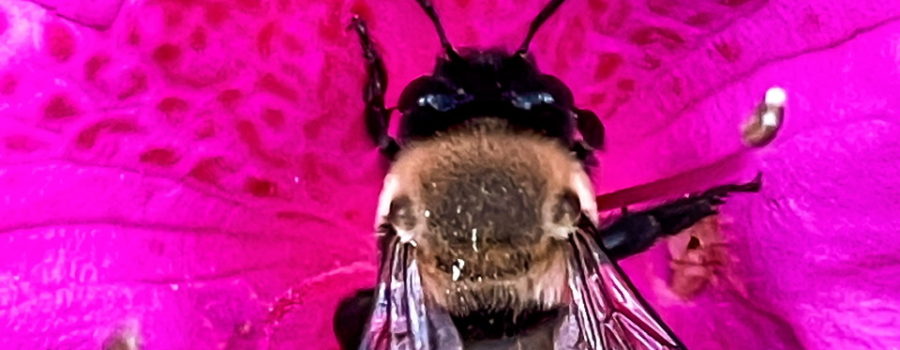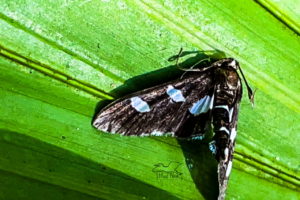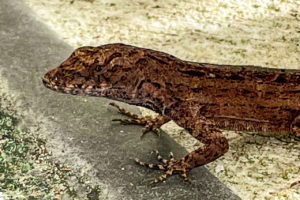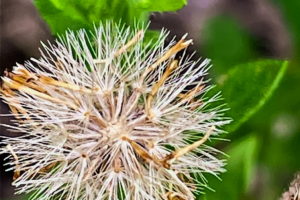The Southeastern Blueberry Bee is an Amazing Pollinator

Not too long ago, I stopped on my way home from work to get some photos of this great bank of azaleas that one of my neighbors has lining the front of his property and his driveway. Every year these bushes put on a tremendous show of color with hundreds of blossoms. It’s a fairly short show, usually just a few weeks, so I have to take advantage while I can. This year when I stopped I got an added bonus. Several of the bushes were literally abuzz with bees. The bees were loud in the places that they were concentrating on, so it wasn’t difficult to find them. They were good sized, fuzzy bees that looked like bumblebees, but not quite as large. I assumed that they were a bit small since it was early in the spring and they weren’t quite full grown yet, but when I got home I double checked my identification and got quite a surprise. Instead of bumblebees these guys were southeastern blueberry bees (Habropoda laboriosa). I should have realized that they weren’t bumblebees since it is so early. I have read about the blueberry bees, but never seen them, let alone photographed them before. It was definitely exciting to add a new species to my life list.

Southeastern blueberry bees are really pretty interesting bees with a very unique lifestyle. They actually spend the majority of their lives underground as pupa and larvae. They are only active outside the nest for a few weeks every spring. It so happens that this time period coincides perfectly with the time that the blueberry flowers are open and needing pollination. Blueberries have heavy, sticky pollen that is not easily distributed between plants by means of the elements, so they are totally dependent on pollinators, and more specifically, buzz pollinators. Buzz pollinators rapidly flap their wings, creating a loud buzz and a vibration that helps to shake the sticky pollen loose. Blueberry bees are incredibly well adapted for this type of pollination. One study showed that a single bee may visit up to 50,000 flowers in it’s short active period. This can result in production of over 6000 berries, all thanks to one bee!

Southeastern blueberry bees are considered solitary bees and each female has reproductive capabilities. During their active period each female bee will dig her nest in a sunny area with loose soil and little vegetation covering it. At the end of her burrow, she will lay a single egg in a chamber filled with pollen and nectar. She will seal that cell and create other branches with other eggs. When she has finished laying her eggs, she will die, and no more blueberry bees will be seen until the following spring when the new bees will emerge from the nest. The males usually emerge first and wait for the females to come out and breed. These bees are very good at keeping themselves warm by buzzing their wings, so they are capable of becoming active earlier than most other bees. This trait also allows them to be active on cooler and even on rainy days. By the time many of the other bees are coming out in the spring, these bees are gone for another year.

Although these bees are best known for pollinating blueberries, they are also good pollinators of some of our other early spring blooming plants. They are commonly seen on azaleas, eastern redbuds, Carolina jessamine, viburnum, oaks, clover and trumpetflowers. Of course, southeastern blueberry bees are not the only pollinators of blueberry plants. Blueberries are also pollinated by bumblebees, honey bees, carpenter bees, and a number of other small native bees. I was very happy to finally actually get to see eastern blueberry bees for myself. I have since stopped by the azaleas again and seen only smaller bees on the flowers. Unfortunately, the azaleas are beginning to go by, and soon the blueberry bees will be gone for another year as well. Spring is such a marvelous time of the year!






Recent Comments